Bacopa: description of aquarium species and their content
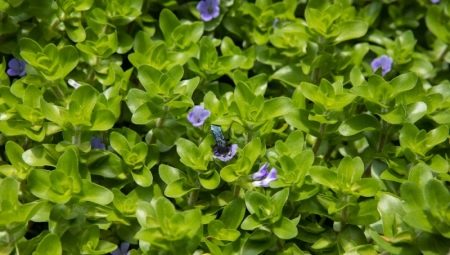
Aquarium Bacopa is a perennial plant that can exist both in water and on land... It is he who is often used by novice aquarists to decorate their artificial reservoir. It is easy to plant and maintain, and it blooms constantly when favorable conditions are created.
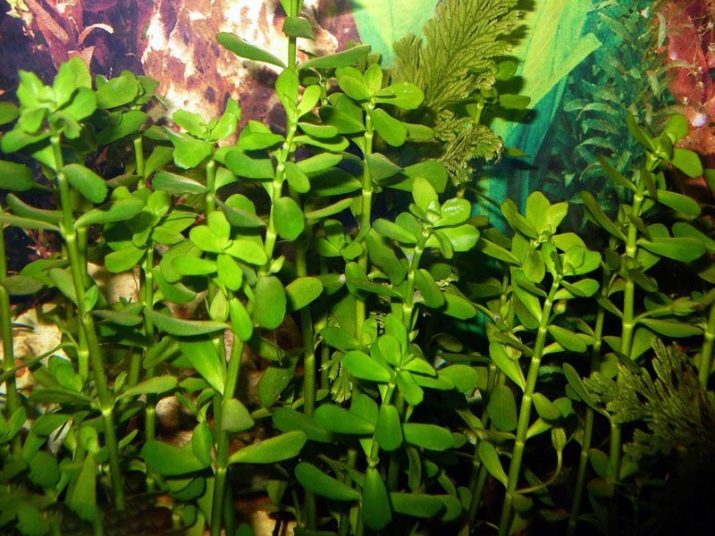
Peculiarities
In a comfortable growing environment, bacopa grows up to 60 cm, the plant has creeping or erect shoots, slightly branched. The stem width is 4 mm, the structure is fleshy, the underwater part has no edge, the above water part, on the contrary, spikes strongly.
The leaves are small, no more than 3 cm in length, and the width varies from 8 to 15 cm, the shape of the plate is ovoid, the arrangement is cruciform-opposite, the structure, like that of the stems, is fleshy. The color of the stems and leaves is presented in different shades of olive from light to dark; in good light, some parts of the plant can turn brown. The root system is rather weak.
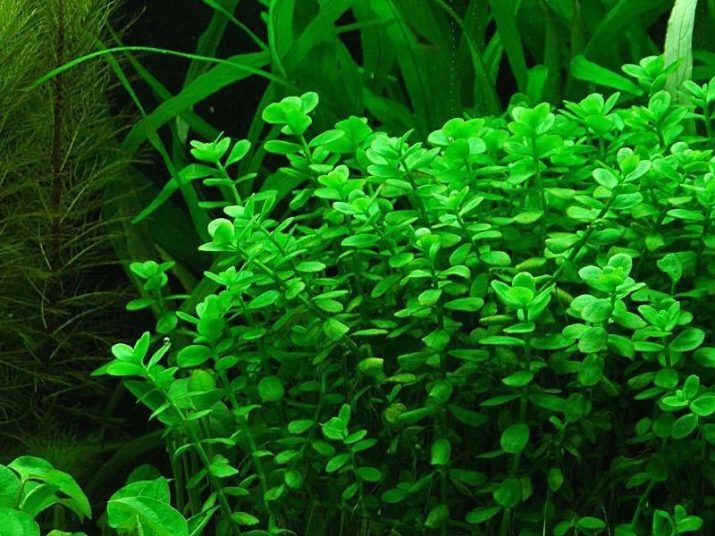
Aquarium views
For planting in artificial reservoirs, 5-10 varieties of bakop are suitable. Let's consider the most common ones.
- Karolinska - these are quite unpretentious representatives of the aquarium flora that do not require special care. The optimal temperature regime, contributing to the full growth and development of such bacopa, is + 25 ... 28 degrees Celsius. If the temperature is lowered, the leaves and stems will start to deteriorate and the plant will stop growing. This variety requires a long day of light at least 11-12 hours.
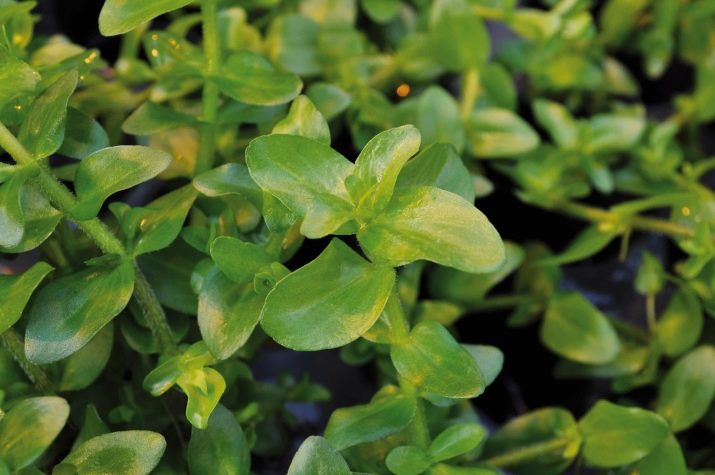
- Australian - this aquarium inhabitant grows up to 35-40 cm, leaf plates are located opposite.To maintain the health of the Australian bacopa, a large tank with a volume of 50 liters or more is required, while the substrate layer should be about 3-5 cm.This variety propagates by cuttings.
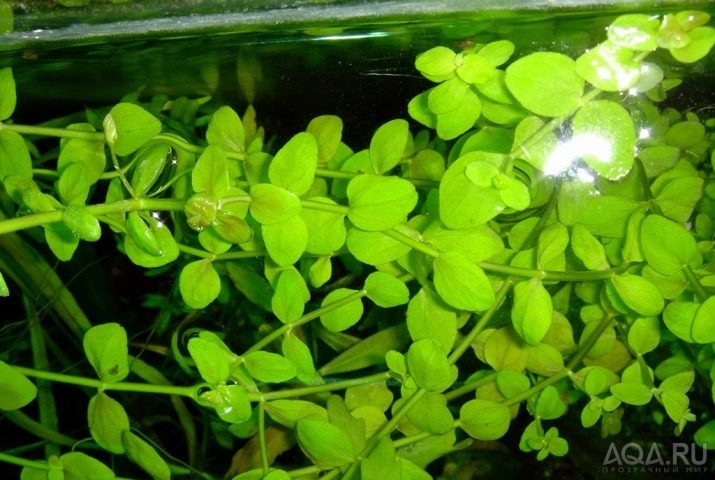
- Madagascar Bacopa - shows high efficiency in the purification of aquarium water, the destruction of algae and individual shady plants. It is not difficult to grow Madagascar Bacopa in an artificial environment, although soon after grafting its growth slows down somewhat, and in order to return to the previous rate of development, it is necessary to increase the lighting power.
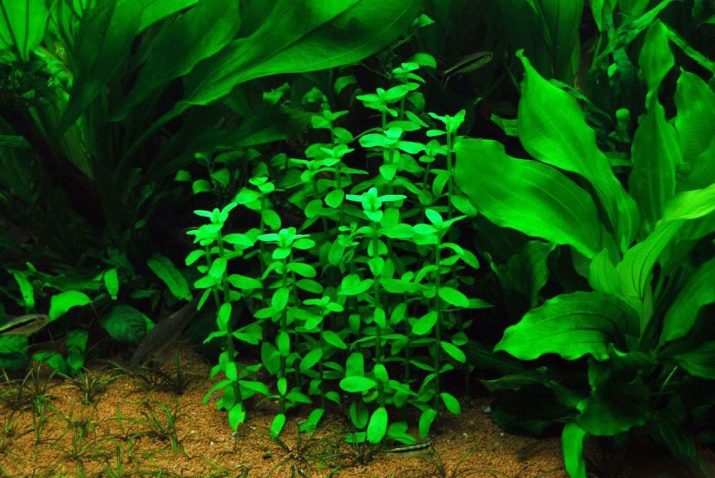
- Monier - This green pet is very popular with aquarists. This is not surprising, because it has a spectacular decorative appearance, richness and richness of colors. The plant looks harmoniously with any background of the aquarium and emphasizes the beauty of the fish, and in addition, it can grow in a variety of types of substrates.

- Variegated - These aquarium pets are usually used to decorate rectangular and irregular tanks. Traditionally, they are placed in the foreground, as this aquarium inhabitant needs bright light for full growth. In addition, it is very important to adhere to the optimal temperature regime, without going beyond the recommended heating level.
All varieties of Bacopa differ in their individual external characteristics, so experienced aquarists usually place them in different parts of the reservoir.
Monniers look most harmonious in the corners of the aquarium, since this variety grows very quickly, decorates darkened areas and creates a very interesting effect in the tank.
The variegated flower is very fragile and delicate, it requires attention and constant care. It tolerates any transplants rather painfully, therefore it is advisable to place it away from other representatives of the aquarium flora.
Australian Bacopa are very impressive in the foreground. Often, breeders combine several types of these plants in one container.
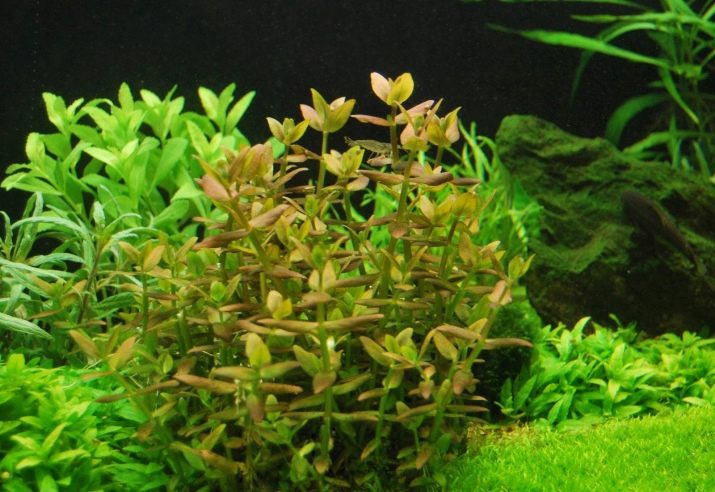
Conditions of detention and care
It is possible to cultivate bacopa only after having previously studied some of the features of the care and maintenance of this culture in the aquatic environment.
The volume of the aquarium where you plan to plant the bacopa should be large - not less than 50 l, the temperature of the water in it must be kept at around + 20 ... 25 degrees Celsius.
To maintain comfortable conditions for the existence of bacope, slightly acidic water is required, preferably soft - if it is excessively hard, then deformations occur on adult leaves.
The growth and development of plants is not affected by the presence of food residues and other organic matter in the habitat - brown and green algae rarely appear on the surface of the bacopa, which can have an adverse effect on the state of the culture.

Bacopa receives all the necessary nutrients from the water, where they come along with food for fish and the remains of shellfish; no additional feeding is needed.
Bacopa likes good lighting, so lamps should be installed in the aquarium. It is better to give preference to fluorescent ones, since they, unlike incandescent lamps, do not heat water. The power and spectrum of the glow are selected individually, depending on the volume of the container and the characteristics of the aquatic flora and fauna.
Please note that not only artificial, but also natural sunlight is very important for aquatic plants - it has the most beneficial effect on their growth. The total duration of daylight hours should be at least 10-12 hours.
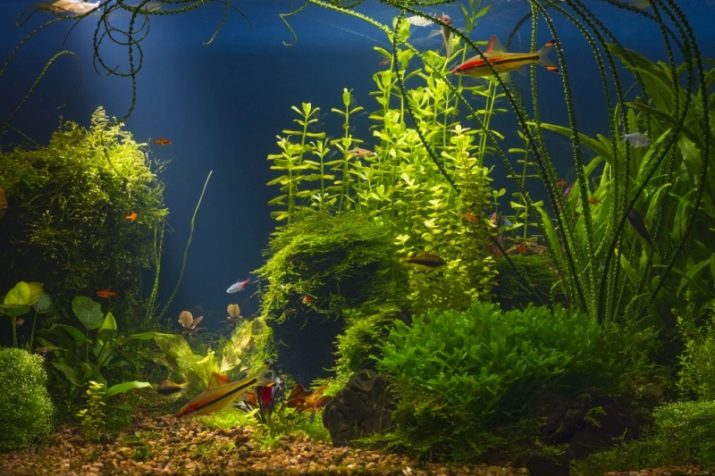
The root system of Bacopa is weak, therefore Many aquarists advise planting upright subspecies in a separate pot, usually in the corners and in the background of the tank. The plant has an accelerated growth rate, therefore, when placed in the center, it quickly fills the entire space.Creeping varieties will be useful to press down with a stone or other decorative element, after the culture is fully rooted, it will look like a beautiful green rug.
From time to time, Bacopa requires transplanting and pruning overgrown branches - such manipulations contribute to the decorativeness of the plant, the growth of new shoots and the formation of cuttings.
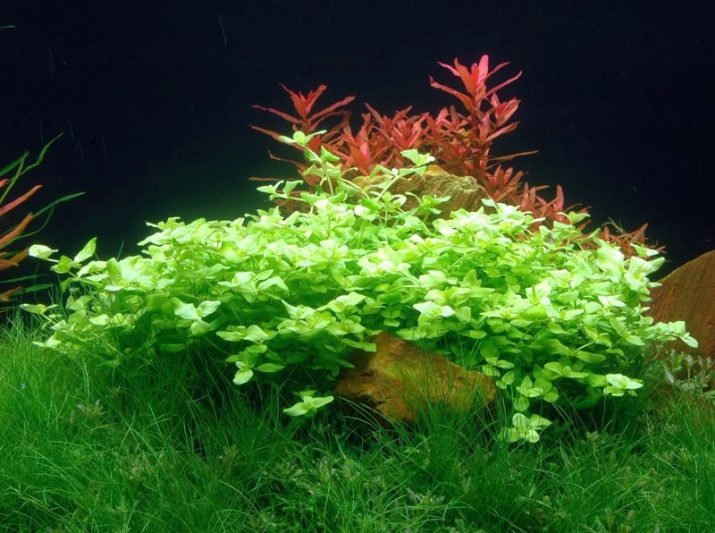
Reproduction
Bacopa is usually propagated in two main ways.
Vegetative - as a rule, the cuttings method is used. To do this, shoots from 10 to 15 cm long are cut from the top of an adult plant and transplanted into the ground, without waiting for the roots to appear - they will appear in the substrate after a few days.
Seed - This method is more common. Bacopa is usually planted in the first decade of March. At this time, you need to prepare a nutritious substrate - it must be as loose as possible and have a low acidity. But the saturation of the soil with useful micro- and macroelements largely depends not only on the plants themselves, but also on the peculiarities of caring for fish and other mobile inhabitants of the aquarium.
The soil must first be disinfected and compacted, the container with seedlings should be placed in a well-lit place at a temperature of + 20 ... 25 degrees. It is important to maintain constant humidity; for this, a drip irrigation system is used. Usually, after 2-3 weeks, seedlings appear, at the age of one month they will get stronger, and they can be moved into an artificial reservoir.
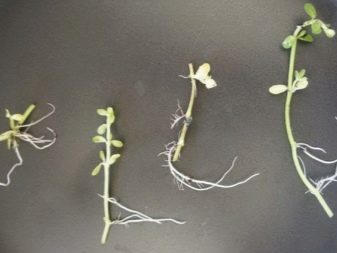

In general, the maintenance and reproduction of bacopa does not require highly specialized skills and knowledge. This plant is quite unpretentious, therefore, even with minimal care, it grows very quickly and decorates any aquarium with its appearance.
And if you place several different types of bacopa in one container, then the water landscape will never be boring and monotonous.
For Madagascar Bacopa, see the next video.








